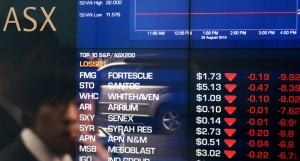We hope you enjoy the final Colonial Market update for 2015, from the team at SALA Financial Services we wish you a very Merry Christmas.

Summary
Australia
The Reserve Bank of Australia (RBA) left the official cash rate on hold at 2% at its meeting on 3 November 2015 and again on 2 December 2015 – where it has remained since May this year.
- In announcing the on hold decision in December, the RBA reiterated its view from November that “the prospects for an improvement in economic conditions had firmed a little over recent months and that leaving the cash rate unchanged was appropriate.
- On the global economy the RBA noted it is “expanding at a moderate pace, with some softening in conditions in the Asian region, continuing US growth and a recovery in Europe.”
- On the housing market the RBA notes that “the pace of growth in dwelling prices has moderated in Melbourne and Sydney over recent months and has remained mostly subdued in other cities.” While “growth in lending to investors in the housing market has eased.
- Employment figures continued to surprise on the upside with 58,600 jobs added in the month of October. The unemployment rate fell to9% from 6.2%. Over the past 12 months 315,000 jobs have been added, the strongest in four years.
- There continues to be signs of softening in the housing market. Building approval numbers appear to have peaked, albeit at an elevated level, with around 230,000 approvals over the past 12 months to October 2015.
Australian dollar
- The Australian dollar was stronger against the major cross currencies over the month. The AUD finished up 1.2% against the USD in November to $US0.7227. These gains occurred despite growing expectations of the US Federal Reserve lifting interest rates at its December meeting, and were partly driven by reduced expectations of further rate cuts by the RBA given better domestic economic data.
- The Australian dollar also moved higher against the euro, up 5.5% as prospects for further ECB easing appeared more certain. The AUD rose against the Japanese yen (+3.3%), was up 3.8% against the sterling and 3.9% against the NZ dollar.
Commodities
- Commodity prices were weaker across the board in November, largely led by oil and metals.
Australian equities
- October’s share market rally ran out of steam in November, with the S&P/ASX 200 Accumulation Index closing the month 0.7% lower. Many of the issues that have affected investor sentiment recently remained unresolved. Macroeconomic issues such as uncertainty surrounding the pace of Chinese economic growth and the timing of potential interest rate increases in the US continued to affect sentiment.
- The Materials sector was particularly weak, dragged lower by sector heavyweight BHP Billiton (-4%). A serious incident in Brazil at a mine operated by Samarco – a 50/50 joint venture between BHP Billiton and Brazilian iron ore miner Vale – exerted significant downward pressure on the share price. The market capitalisation of BHP Billiton has declined by more than $25 billion since the incident in early November.
Listed property
- Listed property securities gave back some of their gains from the past year in November, with the S&P/ASX 200 Property Accumulation Index declining 2.9%.
- Stocks in the retail sub-sector, which have been performing relatively well of late, were among the weakest performers.Vicinity Centres (-6.9%) and Westfield Corporation (-6.3%), for example, underperformed peers.
- On the positive side, Mirvac Group (+3.3%) was a notable outperformer following its AGM where management suggested it is exploring options to unlock value in the business.
Global developed markets
- After recording gains of close to 8% in October, the broad developed equity market, as measured by the MSCI World Index fell by 0.7% in US dollar terms in the month of November, and 1.9% lower in Australian dollar terms.
- Geopolitical risks, weak commodity prices and heightened expectation of an interest rate hike by the US Federal Reserve after strong employment numbers weighed on the market.
- These overall falls hide mixed losses and gains globally, with markets in Europe outperforming as expectations increased of aggressive easing measures to be introduced by the ECB. US markets were up marginally while
Asia was broadly weaker.
Global emerging markets
- Emerging market equities performed poorly in November with the MSCI Emerging Market Index down 4.0% in US dollars and 5.1% in AUD terms. All regions recorded falls, led by Europe, Middle East and Africa, with the weaker oil price contributing to these losses. MSCI EM Latin America fell 4.4% while MSCI EM Asia was down 3.3% in US dollar terms.

Leave a Reply